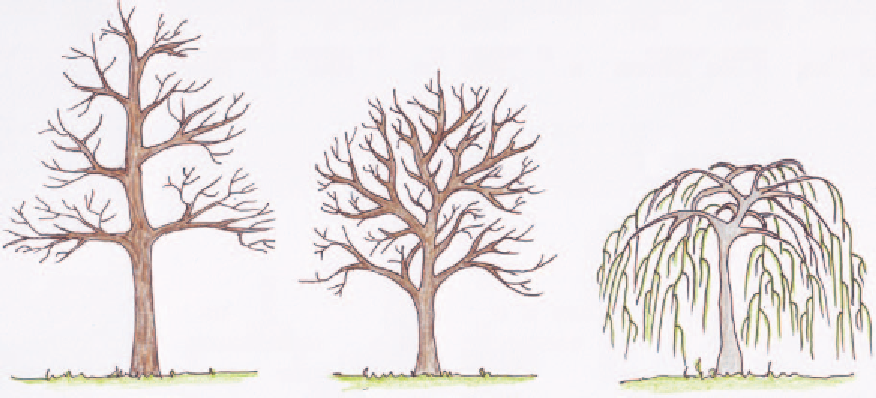Agriculture Reference
In-Depth Information
a
b
c
Figure 4.77
Three basic tree and shrub shapes. The symmetrical spire (a). The rounded or randomly branched (b), and
the weeping tree (c).
A leader is really just an extension of the
trunk, rising like a central column from the
ground to the tip of the tree. Do not attempt
to reduce the height of such trees. Their
beauty lies in the regular assemblage of
branches radiating from the central leader.
Once the leader is lost the tree loses its
symmetry. However, often as in life, there is a
wayward branch that challenges the central
leader. It should be dealt with immediately.
Remove it from its point of origin at the
central leader (see Figure 4.78)
Remedial pruning beyond removing
competing leaders is usually not that
successful with most conifers in the long
term. If they are too wide or too tall,
removal of the whole plant may be the
best option.
Reducingheight,widthormakingmore
spaceunderneathyourtree
Reducing height
Trees and shrubs with rounded crowns or
less-ordered branch structures are more
democratic in their branch hierarchy and are
therefore easier to modify. Spire-shaped trees
can be made less dense or narrower, or to
have more room underneath the canopy;
however, their height cannot be altered
without sacrificing the symmetry of the tree.
Reducing height and width of other trees and
shrubs is relatively easy. I am using a crown-
shaped to random asymmetrically shaped
tree to illustrate in Figure 4.79.
Spire-shaped trees will, with age, lose the top
of the central leader. This is merely a function
of the age of the tree.
Many conifers conform to this general shape,
and being evergreen, it can be difficult to see
the branch structure. Part the foliage to have
a look inside the plant. Not only will you be
able to discern how the branches are placed,
you will be rewarded with the manly
perfumes so characteristic of conifers.

